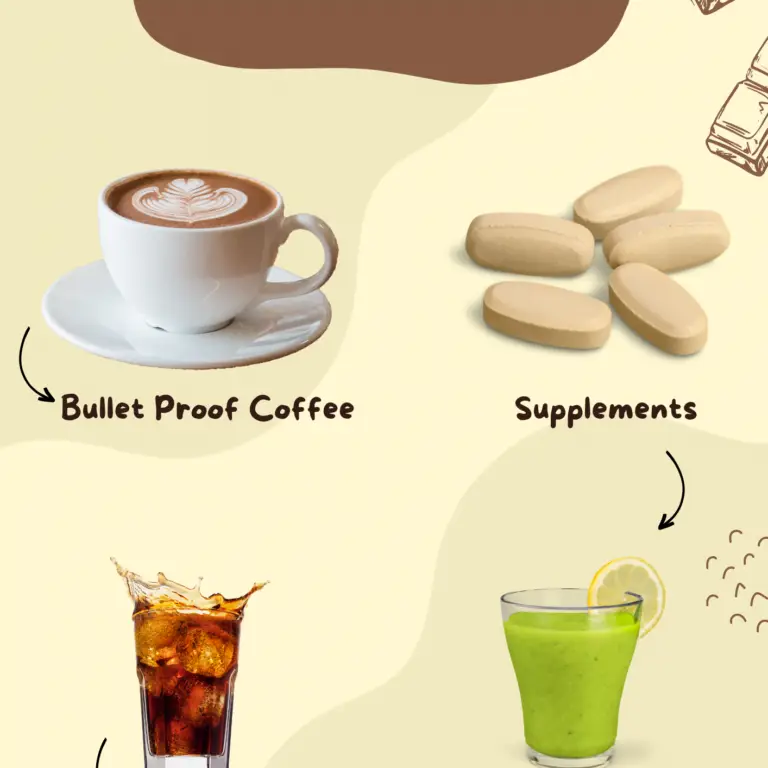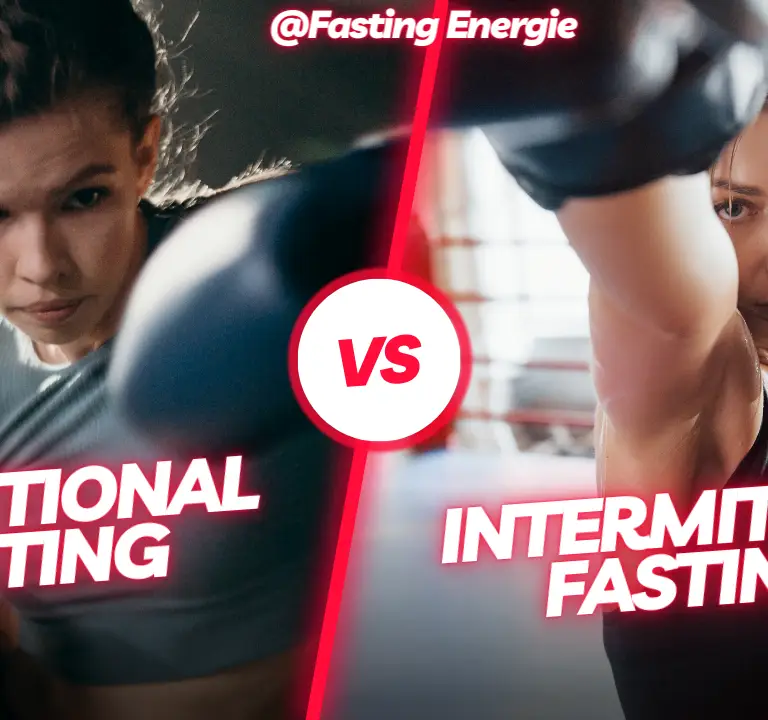3 Best Times and Tips for Exercising While Fasting – What You Need to Know!
The combination of exercise and fasting provides two effective methods for boosting health and fitness. When fasting, the body goes through substantial metabolic changes, principally switching from using glucose as its primary energy source to using lipids. Exercising while in this condition can boost fat burning and accelerate the benefits of fasting, such as better insulin sensitivity and fat reduction. However, the interplay of exercise with fasting necessitates careful control in order to sustain energy, keep muscle mass, and avoid excessive stress on the body.
Table of Contents

Exercising While Fasting
Advantages of Combining Fasting and Exercise
Combining fasting and exercise increases the physiological benefits of both. Key benefits include:
- Enhanced Fat Oxidation: Exercising while fasting might speed up your body’s fat metabolism.
- Improved Metabolic Efficiency: Training while fasting can help your body become more efficient at fuel management.
- Increased Growth Hormone Production: Fasting and exercise both raise levels of growth hormone, which can help with fat loss and muscle gain.
- Enhanced Cellular Adaptation: Exercise promotes autophagy, especially when paired with fasting, resulting in enhanced cellular repair and maintenance.
Understanding the Fasting State
What Happens to Your Body While Fasting?
During fasting, your body experiences various changes:
- Glycogen depletion: Initially, the body depletes its glycogen stores, which are the stored form of glucose.
- Increased Lipolysis: As glycogen stores deplete, the body increases lipolysis, which is the breakdown of fat cells into fatty acids that are then used for energy.
- Ketosis: Following prolonged fasting, the liver begins to convert fatty acids into ketones, which serve as an alternate energy source for the brain and other tissues.
Phases of Fasting and Their Effect on Energy
Fasting can be separated into various phases, each with a particular effect on energy levels.
- Phase 1 (6-24 hours into fasting): Energy levels may drop as glycogen stores are depleted, causing weariness if the body is still inefficient at burning fat.
- Phase 2 (24 hours to 2 days): The body begins to use more fat as fuel, which helps to recover and stabilise energy levels.
- Phase 3 (more than two days): Deep ketosis is reached, and energy levels often stabilise or increase, providing good hydration and electrolyte balance.
Types of Exercises and Their Suitability for Fasting
- Light Workouts: Walking, yoga, and gentle cycling are suitable for fasting. They can be done without considerably depleting energy reserves while yet providing health benefits such as increased insulin sensitivity and fat burning.
- Intense Workouts: High-intensity workouts like weightlifting, sprinting, or extreme cardio can be more difficult when fasting. These tasks often require glycogen, which is decreased while fasting.
Best Practices for Different Types of Physical Activities
- Timing: For optimal nutrient utilisation, intense workouts should be undertaken near the meal window or shortly after eating.
- Hydration and Electrolytes: Staying hydrated and electrolyte balanced is critical, especially during longer or more severe workouts.
- Gradual Adaptation: Gradually increasing the intensity and duration of workouts can help the body adjust to exercising while fasting without generating excessive stress or tiredness.
Exercise Intensity and Timing
How Exercise Intensity Impacts Fasting Benefits
The intensity with which you exercise while fasting can have a substantial impact on your body’s metabolic and hormonal reactions. High-intensity workouts, such as sprinting or heavy lifting, rely on glycogen and can boost growth hormone and testosterone levels, promoting fat loss and muscle preservation. Low to moderate intensity workouts, such as strolling or light jogging, predominantly use fat as an energy source, enhancing fat oxidation and improving cardiovascular health while not depleting glycogen stores much.
Optimal Times to Engage in Various Intensity Levels –
- Low-Intensity Workouts: Can be done anytime during fasting as they are less demanding on glycogen stores.
- High-Intensity Workouts: Best done closer to the last meal, when glycogen stores are more likely to be enough, or shortly before the eating window opens, allowing for quick post-workout feeding to promote recovery.
Ketosis, The Muscle Preserver
Ketosis’s Effect on Muscle During Fasting
Ketosis, a state in which the body uses ketones for fuel, is often attained after extended fasting. This metabolic state preserves muscle mass because ketones provide a high-energy alternative to glucose, lowering the body’s need to break down muscle protein for energy. Ketosis also stimulates the release of hormones such as human growth hormone, which helps to preserve and build muscular tissue.
Exercise Strategies to Enhance Ketosis
- Timing Exercise: Aerobic exercise near the conclusion of your fasting period might deepen ketosis by burning through glycogen stores and increasing fat burning.
- Type of Exercise: Aerobic activities that stimulate fat oxidation, such as steady-state cardio, are the most beneficial for increasing ketosis.
Timing Your Exercise
Pros and Cons of Early Morning Workouts –
- Pros: Exercise in the morning during fasting can boost fat oxidation and improve mental clarity.
- Cons: Energy levels may be lower, and high-intensity workouts may result in faster exhaustion without pre-workout nourishment.
Mid-Fast exercises: Energy Levels and Fat Burning
- Energy Levels: Mid-fast exercises can have varying levels of energy. If the body adapts to fasting, it may begin to use fat as fuel more efficiently, giving consistent energy.
- Fat Burning: Exercising during a fast increases fat burning because glycogen levels are likely exhausted and the body relies on fat stores for energy.
Pre-Break-Fast Exercise: Optimising Energy Utilization
- Optimising nutrition Uptake: Exercising before breaking a fast can raise insulin sensitivity, resulting in more effective nutrition uptake post-workout.
- Maximising Fat Loss: This timing takes advantage of low glycogen levels to maximise fat burn during the workout.
Exercise During Different Fasting Protocols.
16/8 Intermittent Fasting: Optimal Times to Exercise
For those following the 16/8 technique, which involves fasting for 16 hours and eating over an 8-hour window, the optimal time to exercise is usually right before breaking your fast. This timing allows you to maximise fat burning while your body is already short on glycogen, and you can reload with a post-workout meal right after exercise to help recovery and muscle synthesis.
24-Hour Fasting: Should You Exercise?
During a full 24-hour fast, it is best to exercise at a low to moderate intensity, such as strolling, easy yoga, or light stretching. Intense workouts may result in greater fatigue and muscle breakdown because you will not be consuming any calories to promote recovery until the fast ends.
Other Fasting Schedules: Customise Your Workout Timing
Other fasting regimens, like as alternate-day fasting or the 5:2 diet, require drastically limiting calorie intake for one or two days each week. Plan more strenuous workouts on non-fasting days or shortly before your usual eating periods. This helps to sustain energy and performance levels while also providing adequate nourishment for recovery.
Nutritional Strategies for Fasted Workouts
What to Eat Prior to and Following a Fasted Workout
- Before: If your eating window allows, eat a meal high in complex carbohydrates and protein about 1-2 hours before working out. This helps to supply adequate energy and may avoid muscle catabolism.
- Post-workout: Focus on protein for muscle repair and carbohydrates to replenish glycogen storage. A carbohydrate-to-protein ratio of 3:1 can help with recuperation.
Supplements to Improve Performance Without Breaking a Fast –
- BCAAs (Branched-Chain Amino Acids): Taking BCAAs before or during a workout can protect muscle tissue without disrupting your fast.
- Caffeine: A small quantity can boost focus and energy and can be taken in the form of black coffee or a caffeine supplement.
Listen to Your Body
Identifying Signs of Overtraining and Fatigue
Keep an eye out for symptoms including chronic exhaustion, reduced performance, sleeplessness, or an elevated resting heart rate. These could signal that your body isn’t healing well due to the combo of fasting and exercise.
Adjust your workout intensity, length, and frequency based on your body’s feedback. If fasting is new to you, begin with milder and less frequent workouts, gradually increasing the intensity as your body adjusts.
Benefits of Exercise While Fasting
Enhanced Fat Loss
Exercise in a fasting state has been proven to increase lipolysis and fat oxidation rates, potentially leading to greater fat loss over time.
Enhanced Metabolic Adaptations
Fasting paired with exercise promotes metabolic flexibility, allowing your body to switch more efficiently between carbs and fats for fuel.
Increased Growth Hormone Levels
Exercise and fasting both promote the body’s natural production of growth hormone, which aids in fat loss, muscle building, and tissue healing.
Conclusion
Combining exercise and fasting can be a highly effective method for increasing physical fitness, decreasing weight, and overall health. Understanding the optimal times to exercise depending on your fasting schedule and listening to your body’s cues allow you to maximise the benefits of both practices without jeopardising your health or performance. To achieve the best outcomes, personalise your approach to your own health state, goals, and lifestyle.
Frequently Asked Questions
u003cstrongu003eWhat happens if you exercise while fasting?u003c/strongu003e
Exercising while fasting can increase fat utilization as an energy source, potentially leading to increased fat loss. It can also boost endurance and mental clarity. However, energy levels may vary, and some might experience reduced performance initially.
u003cstrongu003eCan you do cardio while fasting?u003c/strongu003e
Yes, you can perform cardio while fasting. Many people find moderate cardio, like jogging or cycling, to be quite manageable on an empty stomach and report that it helps with fat burning.
u003cstrongu003eCan I lift weights while fasting?u003c/strongu003e
Yes, lifting weights while fasting is possible. It’s important to listen to your body and possibly adjust the intensity of your workout. Consuming electrolytes and staying hydrated can help maintain performance levels.
u003cstrongu003eDo you lose muscle when fasting?u003c/strongu003e
Short-term fasting typically does not lead to muscle loss as long as protein intake is adequate during non-fasting periods and regular resistance training is maintained. The body initially increases growth hormone levels, which helps protect muscle mass.
u003cstrongu003eWill I lose muscle if I fast for 7 days?u003c/strongu003e
Extended fasting for 7 days can increase the risk of muscle loss if not managed with proper nutrient intake before and after the fasting period. Prolonged fasting should be conducted under medical supervision, particularly if engaging in regular physical activity.
u003cstrongu003eWhat is the best exercise while fasting?u003c/strongu003e
The best exercise during fasting depends on individual tolerance and preference. Light to moderate cardio or low-intensity resistance training can be particularly effective and more manageable on a fasting stomach.
u003cstrongu003eDo you lose weight faster if you exercise while fasting?u003c/strongu003e
Exercising while fasting can potentially accelerate weight loss by increasing fat oxidation and improving metabolic adaptations. However, it’s important to balance exercise intensity and type with fasting duration to prevent fatigue and maintain overall health.








I am extremely inspired along with your writing
skills as smartly as with the layout to your blog.
Is this a paid theme or did you modify it your self?
Either way stay up the nice quality writing, it is rare to
see a nice weblog like this one nowadays. Fiverr Affiliate!